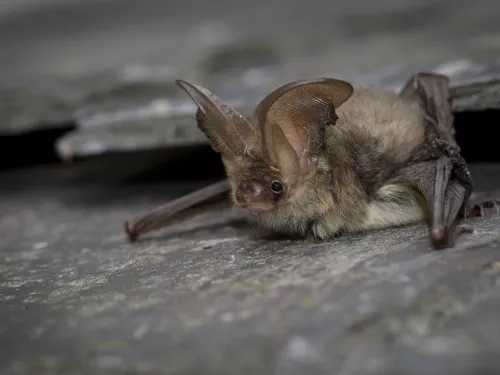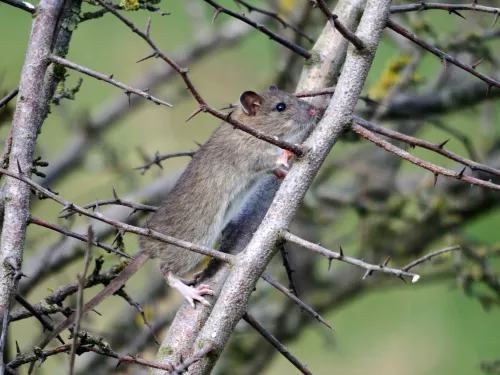Brown hairstreak
The brown hairstreak is an elusive butterfly that spends much of its time in the treetops feeding on aphid honeydew.
The brown hairstreak is an elusive butterfly that spends much of its time in the treetops feeding on aphid honeydew.

The brown hare is known for its long, black-tipped ears and fast running - it can reach speeds of 45mph when evading predators.
A common dragonfly of canals, marshes, reedbeds and lakes, the Brown hawker can be seen patrolling the water or 'hawking' through woodland rides. It is easily distinguished by its chocolate-brown body.

The brown long-eared bat certainly lives up to its name: its ears are nearly as long as its body! Look out for it feeding along hedgerows, and in gardens and woodland.

The brown rat has a bad reputation, but it mostly lives side-by-side with us without any problems. It can be seen in any habitat.
The brown shrimp blends perfectly with its seabed home and is found all around the coasts of the UK.
A fierce predator of small fish and flying insects, the brown trout is widespread in our freshwater rivers. It is has a golden body, flanked with pale-ringed, dark spots.
The Brown-lipped snail comes in many colour forms, but usually has a brown band around the opening of its shell. It prefers damp spots in wide range of habitats, from gardens to grasslands, woods to hedges.
The caterpillars of this fluffy white moth are best admired from a distance, as their hairs can irritate the skin.
Buddleia is a familiar shrub, well-known for its attractiveness to butterflies. It is actually an introduced species, however, that has become naturalised on waste ground, railway cuttings and in towns.
Spot these giants of the bumblebee world during springtime. They can be seen buzzing from flower to flower getting their pollen fix.
It is so easy to miss this clever little moth. It is a master of disguise, blending in perfectly as it looks just like the twig of a birch tree! Flying only at night, the buff-tip moth can be seen from May to July.